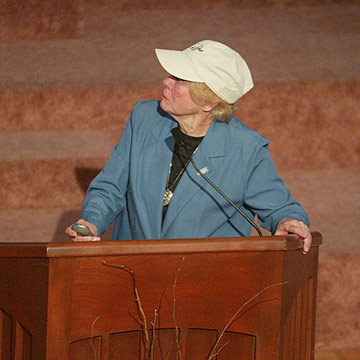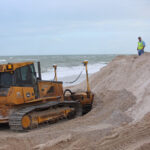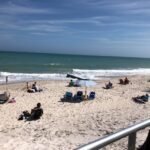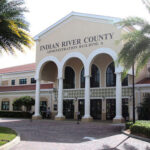
VERO BEACH — Recent chilly temperatures notwithstanding, Vero Beach was in the midst of an Ice Age 13,000 years ago that has led to one of the rarest art finds in the world and captured the attention of scientists about the importance the site where that and other ancient artifacts have been discovered.
On Thursday, four of those scientists eminent in their fields discussed “Vero in the Ice Age” at the Emerson Center’s Florida Humanities Series and provided some perspective on how rare and rich is the archeological site located in Indian River County. Their visit was prompted by a discovery last year by Vero Beach resident and amateur archeologist James Kennedy of a carved image of a wooly mammoth on an extinct mammal bone has been authenticated and termed the rarest and oldest work of art in the Western Hemisphere.
The event also included extinct fauna fossil displays and a Fossil “Road Show” by experts who identified artifacts brought by program attendees.
Dr. Barbara Purdy, professor emerita, anthropology of the University of Florida; Dr. Richard Hulbert, vertebrate paleontologist at UF; Dr. Kevin Jones, chair of the Materials Science and Engineering Department of the UF and Dr. Thomas Stafford, president of Stafford Research Laboratories in Lafayette, Co., described Ice Age life during the Pleistocene era in Vero Beach in which mastodons, mammoths, giant sloths and saber-toothed felines lived in proximity to ancient man.
Purdy noted that the authentication of Kennedy’s mammoth incised bone is “the oldest, most spectacular are rare work of art in the Americas. This finding adds a whole new dimension at the old Vero site. It’s all about us – Americans seeking the first Americans.”
Kennedy’s discovery in an undisclosed site in Indian River County came 100 years after the once-famous Vero Man remains were found nearly 100 years ago.
Kennedy is astounded at the significance of his one-of-a-kind find.
“It still hasn’t sunk in and it blows my mind,” he said. “It sat under my sink for two years. I was going to take it and other bone fragments and give them away or sell them at a flea market. But when I washed some dirt off it and the light hit it, I saw the mammoth design.”
The bone will be sold at auction later this year by Rennick Realtors & Auctioneers of Vero Beach.
A group of area residents formed the Old Vero Ice Age Site Committee to further study and preserve the original “Vero Man” site first excavated in 1913 and located near the airport and county administrative complex.
Vero Beach and county officials have passed resolutions to support the site’s preservation. The goal is to excavate a 200-foot by 8-foot trench along a canal to discover if the site contains additional undisturbed Pleistocene fossils and human remains.
It is estimated that the cost of excavation and authentication of the artifacts would cost $500,000.
A new excavation would enable scientists to better determine the age of the geologic strata of the site, understand why there is such a high concentration of fossils there and provide samples from which to determine the causes of mass extinction Pleistocene era fauna and responses to climate change.
Following identification by scientists, the artifacts would return to Vero Beach to be available for study and display for residents, students and visitors.
Tax-deductible donations for the project may be made to the IRC Historical Society, Inc., P.O. Box 2192; Vero Beach, FL 32961.
For more information about the excavation project, contact the Old Vero Ice Age Site Committee, P.O. Box 351, Vero Beach, FL. 32961






